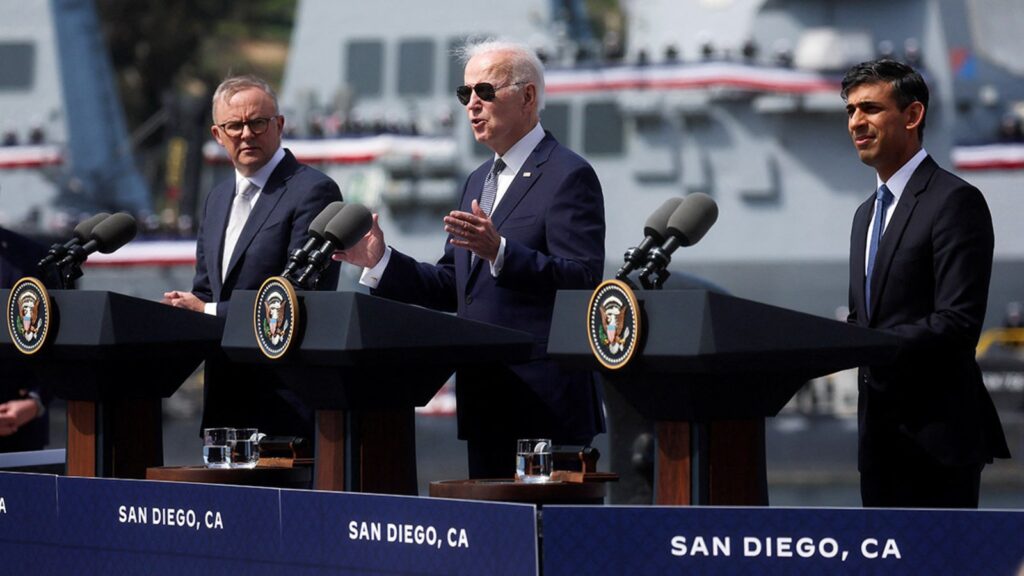Historical context: From the agreement with France to the AUKUS alliance
In 2016, Australia signed a €56 billion contract with the French company Naval Group to build 12 conventionally powered (diesel-electric) Barracuda-class submarines. This situation led to a diplomatic incident with Paris, as Australia canceled the contract on September 15, 2021, to join the AUKUS alliance with the United States and the United Kingdom. This new agreement aimed to strengthen military presence in the Indo-Pacific region against China’s growing influence by providing Australia with 8 submarines.
Among them, at least three U.S. Virginia-class nuclear attack submarines (SSN) were planned, with additional British SSN-AUKUS submarines in the future. The long-term goal is for Australia to build its own submarines by 2040. As a fact, the country has already invested $500 million out of the $3 billion planned in the agreement.
The limits of the AUKUS alliance
However, American shipyards are facing major challenges in meeting the growing demand for submarines. To counter China’s rapid naval expansion, the U.S. Navy aims to increase its attack submarine fleet from 49 to 66 units. To achieve this while fulfilling the Australian order, an average production of 2.3 submarines per year would be required. However, since the Covid-19 pandemic, U.S. shipyards have only managed to produce an average of 1.2 submarines per year. This highlights an insufficient industrial capacity to meet both American and Australian needs simultaneously.
Alternative solutions
Given these challenges, doubts are emerging about Australia’s ability to receive nuclear submarines within the planned timeline. Some discussions suggest a possible return to the French option or the exploration of other solutions, including alternatives without submarines. The U.S. Congressional Research Service suggested that the 3 to 5 submarines initially intended for Australia could instead be delivered to the U.S. Navy. However, some of them would still be deployed from Australia, alongside 4 other U.S. SSNs and a British SSN, as planned for 2027.
Former Australian Prime Minister Malcolm Turnbull warned against excessive dependence on the United States, stating: “We cannot assume that the Americans will always turn up.” This statement reflects growing concerns about the reliability of U.S. commitments within the AUKUS alliance.
Other alternatives have also been considered, such as acquiring Japanese Taigei-class submarines. This option had previously been considered by Canberra. These diesel-electric submarines are delivered to the Japanese Navy on time and without cost overruns. They are also the first models equipped with lithium-ion batteries.
Meanwhile, some argue that the purchase of submarines should be abandoned altogether. Australia could instead invest its funds in other military capabilities, such as long-range anti-ship missiles, drones, loitering munitions, B-21 strategic bombers, or other long-range attack aircraft. For now, no final decision has been made.
The Australian submarine crisis highlights the strategic, industrial, and diplomatic challenges linked to the AUKUS program. Between potential delays, uncertainties over deliveries, and increasing dependence on the United States, Australia must carefully evaluate its options to ensure long-term security. Faced with these obstacles, alternatives such as acquiring Japanese submarines or developing other military capabilities are being considered. This complex issue underscores the importance for Canberra of balancing international alliances with national defense sovereignty.










